Tokyo Ravens is a lot of things, but one thing it definitely isn’t is predictable. At a macro level at least, on a micro level varying tropes come into play with the characters that are hit and miss in terms of their effectiveness. It’s perhaps not even fair to say its plot is unpredictable; it is insofar as that if you are not paying attention and wholly invested in the story, character titles and lineages then a lot of the series bigger reveals will creep up on you. That investment doesn’t just reward you with predetermination about who is the reincarnation of whom but generally a better understanding of what the devil is going on.
It starts out with a love triangle, followed by a death, followed by a “must get stronger” subplot and then a fox girl appears. Harutora’s ascension (and the audience’s initiation) into the super-charged spirit world of eastern mysticism is similar in approach to the underappreciated Tokyo Majin but the blend of old-world chants, talismans and spells with humvees, mobile phones and the Tokyo skyline is distinctly its own. Weave in some psuedo-political intrigue, sedition and the stalwart campus love comedy and you get at least an impression of what Tokyo Ravens has to offer.
The outer layer of the story concerns the teenage Harutora and Natsume, childhood friends (naturally) and star crossed lovers, attending “Shaman school” in the middle of Tokyo. A situation complicated by Harutora’s lack of ability with the spiritual arts and Natsume supposedly being the reincarnation of an incredibly powerful mystic. There’s also an ogre, an astrologer, a general and a one-legged homeroom teacher. Certainly not lacking for variety at least even if the characters do initially tend towards their personality archetypes: dunderheaded do-gooder, prim and proper love interest, indifferent best friend etc. The skill in which the series teases out the better aspects of the cast is to be commended: Harutora for instance could have easily been a blunt instrument yet he is shown to have genuine empathy for those around him. Even the initially grating Suzuka is afforded some development, although that occurs during the series first and perhaps most fundamental misstep: top loading the plot.
At a time when you’re just getting used to the rules that the series plays by, exposition about Suzuka’s past is dumped wholesale when it is least likely to be affecting. This is followed shortly after by conspiratorial conversations about the Spirit Department and its hierarchical struggles at a time when it’s unclear what the Department is or does or who any of these people are. Watching episodes week to week requires an elephant like memory to retain all of that unneeded commentary for when it’s most needed. Unfortunately no amount of total recall would help with the set piece battles that while colourful, varied and edge-of-your-seat exciting, are almost entirely unintelligible. Imagine the techno-babble of Star Trek except transposed into Taoist and Shinto spiritualism: he just took out a stone wrapped in leaves! Is that good?
It definitely doesn’t hurt the visuals which throw together luminescent ideograms and CG mechanical beasties of varying quality, nor does it affect the overall ebb and flow of the skirmish, however it would be nice to know whether what’s going on at least adheres to some kind of internal rulebook. This doesn’t affect the younger character’s battles which are few and far between and usually devolve into shouting “Order!” until something falls over, riding around on a flying white horse, or liberal application of Natsume’s dorky looking, and bizarrely useless, pet dragon. The other side of the pet coin is Harutora’s: a pint-sized gravel-voiced fox girl whose overriding purpose is to provide some of the lighter moments in the series. “Lighter” to be read as “pants on head stupid” as the series is at its worst when episodes are devoted to her antics set apart from the main story, the nagging feeling being that the time would have been better spent better explaining the multitude of characters who pop-in unannounced like unwanted strangers. It’s a shame because Kon’s relationship with Harutora grows into something worthwhile when she isn’t whipping down her hakama pants only for Natsume to walk in right then. Oh how unexpected.
Like the taijitu motif used throughout, the series is distinctly split in two - at its best in the latter half after a midpoint shake-up that sees the Shaman School campus unusable and the otherwise clear good / evil divide well and truly blurred. The first half’s antagonist ranked highly on the “gloriously evil” scale, but after that there is a pleasing greyness to the enemies, relying instead on ideological differences rather than baby-eating villainy. This does unfortunately have the effect of making some of the antagonists seem arbitrary in their actions, not helped by a strange lack of discipline on display with magic users spared any remuneration for what their familiars did for instance, even if that was carve a bloody swath through a crowd of people.
That lack of clarity pleasingly extends to the storyline as a whole, never confining itself to just one track: this is not a coming of age story although Harutora does transform as the series progresses, equally it is not a story of political power struggles despite clandestine meetings and spiritual politicians playing people chess. Like many good stories it is composed of many smaller ones that are by themself recognisable and contribute to the whole. Tokyo Ravens’ whole does eventually become better than the sum of its parts but it’s unfortunate that it takes so long and ends where it does, feeling like it had just hit a stride that had been up till then distinctly sedate. Whether the light novel source continues to improve from the anime series’ ending point is a question for Japanese speakers because like Tokyo Majin before it, Tokyo Ravens will likely sink into obscurity.
Whether it’s indicative of a distaste for the yard-sale like application of Japanese mythology and spiritual history - too much and you’re lost, just enough and you’re sold - or the unforgiving storytelling method is at this point somewhat academic. The series is certainly distinctive: audibly for its I’ve Sound x Maon Kurosaki opening, visually for the bird-like smiles of the characters and permanent, Saikano-esque, blushes on their faces and literally for the hyperactive use of eastern schools of magic. Similarly it is for the most part enjoyable and persistently interesting but, like the image of a Shinto priest using a mobile phone, it lacks a mass-market appeal that a series like Ga-Rei Zero managed, meaning Tokyo Ravens will remain distinguished, but a niche pleasure in an already niche medium.
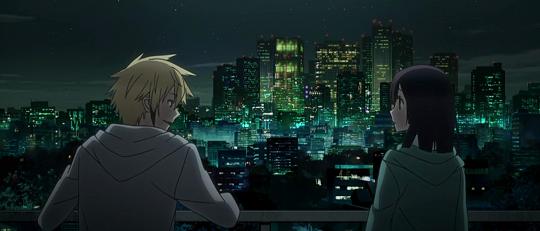

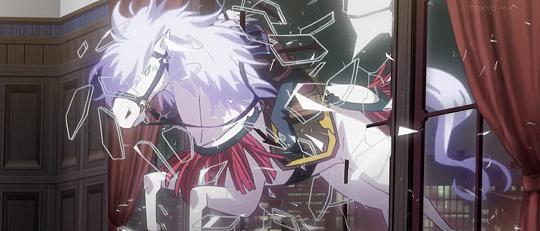
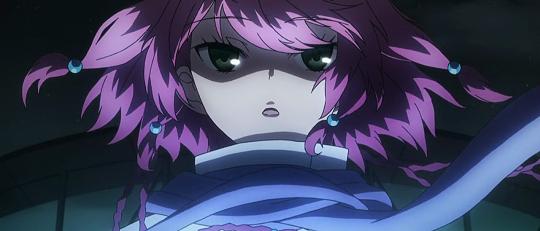

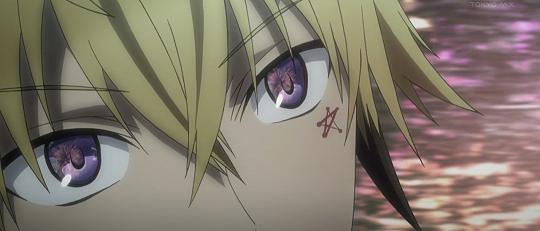

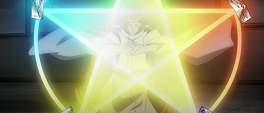
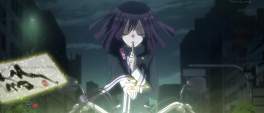


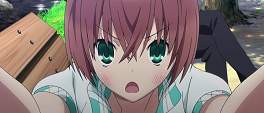


Anywa,y I'm really pleased that someone else remembers Tokyo Majin, I would've loved to see even more of it back in the day, the kind of gritty and somehow bleak art style was a real selling point.